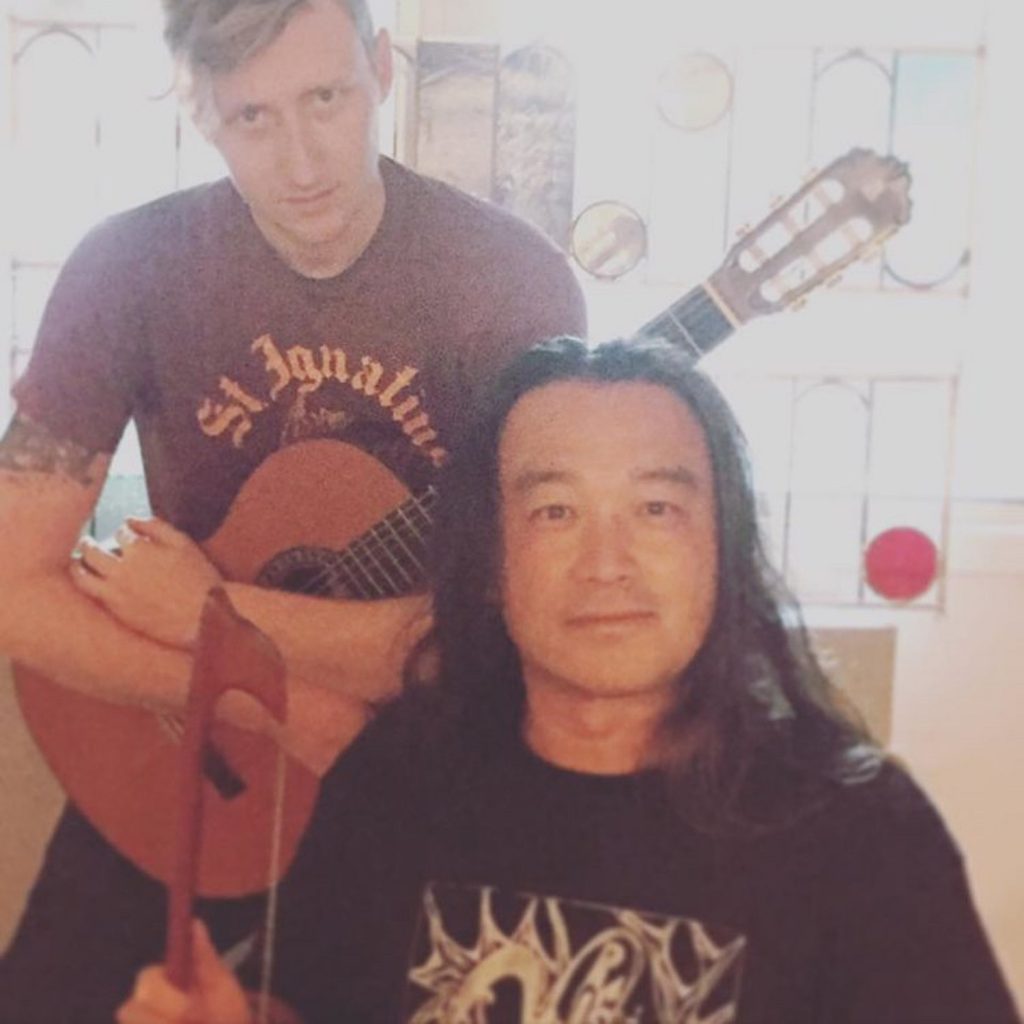
The title of the second recording by Tatsuya Nakatani and Shane Parish goes right to the heart of their shared concept of how to improvise music. For both aesthetic and practical reasons, the two men are committed solo performers. So, when each of them plays with another person, there has to be a point. In this instance, it’s finding ways to make their current individual approaches work together.
Nakatani is a percussionist who spends a lot of time these days playing gongs, either alone or while conducting workshops and orchestras, but while collaborating with an acoustic guitarist, he sticks mostly to his drumkit. Nakatani, however, still doles out accommodation sparingly; within seconds, he can escalate from sparse scrapes across a cymbal to massive storm clouds of sound, which change shape and texture from moment to moment. Parish, on the other hand, has pursued a solo path that involves deep dives into American folk traditions, but he also puts food on the table by teaching musicians whatever they need to learn. His challenges in this setting involve not just finding a place within Nakatani’s potentially complete-in-themselves performances, but also the right material.
Interactivity, which was recorded live at Static Age Records in Parish’s hometown of Asheville N.C., is split into three lengthy tracks. Each section feels like a negotiation. Early on, Nakatani pushies for dynamic action and Parish counters with melodies and contained figures. Their interactions create an atomic illusion in which the guitarist is the nucleus and the percussionist spins the rest of the elements around him. But then Nakatani dispels that image by paring back his activity and volume so that Parish’s playing looms large. During another sequence, Parish juggles licks plucked from folk and classical bags, then accelerates his playing into a mad blur. The percussionist matches his energy level and density, but refrains from engaging with the guitarist’s proposed genres. Ultimately, they find common ground with sounds that suggest another illusion; Parish’s six strings are rain, and the percussionist’s heaving sound field is the landscape on which it falls.
Such moments of resolution are satisfying, but also fleeting. Soon one player or the other introduces an idea that renews the music’s instability and, with it, the possibility for renewed adventure.
—Bill Meyer






